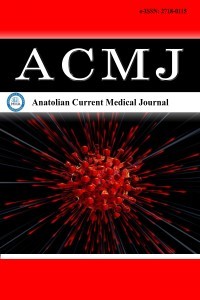1.
Hudise JY, Aldhabaan SA, Nassar RS, Alarfaj AM. Evaluation ofscar outcome after alar base reduction using different surgicalapproaches. J Oral Maxillofac Surg 2020; 78: 2299.e1-2299.e8.
2.
Warner JP, Chauhan N, Adamson PA. Alar soft-tissue techniquesin rhinoplasty: algorithmic approach, quantifiable guidelines,and scar outcomes from a single surgeon experience. Arch FacialPlast Surg 2010; 12: 149-58.
3.
Carniol ET, Adamson PA. Surgical Tips for the Management ofthe Wide Nasal Base. Facial Plast Surg 2018; 34: 29-35.
4.
Aksu I, Alim H, Tellioğlu AT. Comparative columellar scaranalysis between transverse and inverted-V incision in openrhinoplasty. Aesthetic Plast Surg 2008; 32: 638-40
5.
Sajid MS, McFall MR, Whitehouse PA, Sains PS. Systematicreview of absorbable vs non-absorbable sutures used for theclosure of surgical incisions. World J Gastrointest Surg 2014; 6:241-7.
6.
Aldhabaan S, Hudise JY, ALqarny M, Alarfaj A. Catgut versuspolypropylene sutures for transcolumellar incision closure inopen rhinoplasty: a retrospective cohort study. Cureus 2020; 12:e9769.
7.
Kilavuz AE, Bayram AA, Serin GM. Comparison of absorbableand nonabsorbable sutures in columellar incision closure inrhinoplasty and their effects to postoperative scar. Facial PlastSurg 2017; 33: 661-4.
8.
Kridel RW, Castellano RD. A simplified approach to alar basereduction: a review of 124 patients over 20 years. Arch FacialPlast Surg 2005; 7: 81-93.
9.
Erol O, Buyuklu F, Koycu A, Jafarov S, Gultekin G, Erbek SS.Comparison of rapid absorbable sutures with nonabsorbablesutures in closing transcolumellar incision in septorhinoplasty:short-term outcomes. Aesthetic Plast Surg 2020; 44: 1759-65.
10.
Ceylan ME, Balıkçı HH. Comparison of scar outcomes of alarflare region using absorbable and non-absorbable sutures: asingle-blind study. Braz J Otorhinolaryngol 2022; 88: 133-9.
11.
Inanli S, Sari M, Yanik M. A new consideration of scar formationin open rhinoplasty. J Craniofac Surg 2009; 20: 1228-30.
12.
Gamboa M, Shayani P, Schmid R, Bobadilla E, Blackwell S.Anatomic basis of notch deformity in open rhinoplasty. AnnPlast Surg 2003; 50: 282-5.
13.
Rohrich RJ, Hoxworth RE, Thornton JF, Pessa JE. The pyriformligament. Plast Reconstr Surg 2008; 121: 277-81.
14.
Daniel RK, Glasz T, Molnar G, Palhazi P, Saban Y, Journel B. Thelower nasal base: an anatomical study. Aesthet Surg J 2013; 33:222-32.
15.
Parell GJ, Becker GD. Comparison of absorbable withnonabsorbable sutures in closure of facial skin wounds. ArchFacial Plast Surg 2003; 5: 488-90.
16.
Gazivoda D, Pelemiš D, Vujaškovic G, Djurdjevic S. Influence ofsuturing material on wound healing - An experimental study ondogs. Vojnosanit Pregl 2015; 72: 397-404.
17.
Brackeen AR, Wells MJ, Freed JM. Irradiated polyglactin 910(Vicryl Rapide) for placement of full-thickness skin grafts.Dermatol Surg 2005; 31: 1707-9.
18.
Gartti-Jardim EC, de Souza AP, Carvalho AC, Pereira CC,Okamoto R, Magro Filho O. Comparative study of the healingprocess when using Vicryl®, Vicryl Rapid®, Vicryl Plus®, andMonocryl® sutures in the rat dermal tissue. Oral Maxillofac Surg.2013; 17: 293-8.
19.
Niessen FB, Spauwen PH, Kon M. The role of suture material inhypertrophic scar formation: Monocryl vs. Vicryl-rapide. AnnPlast Surg 1997; 39: 254-60

